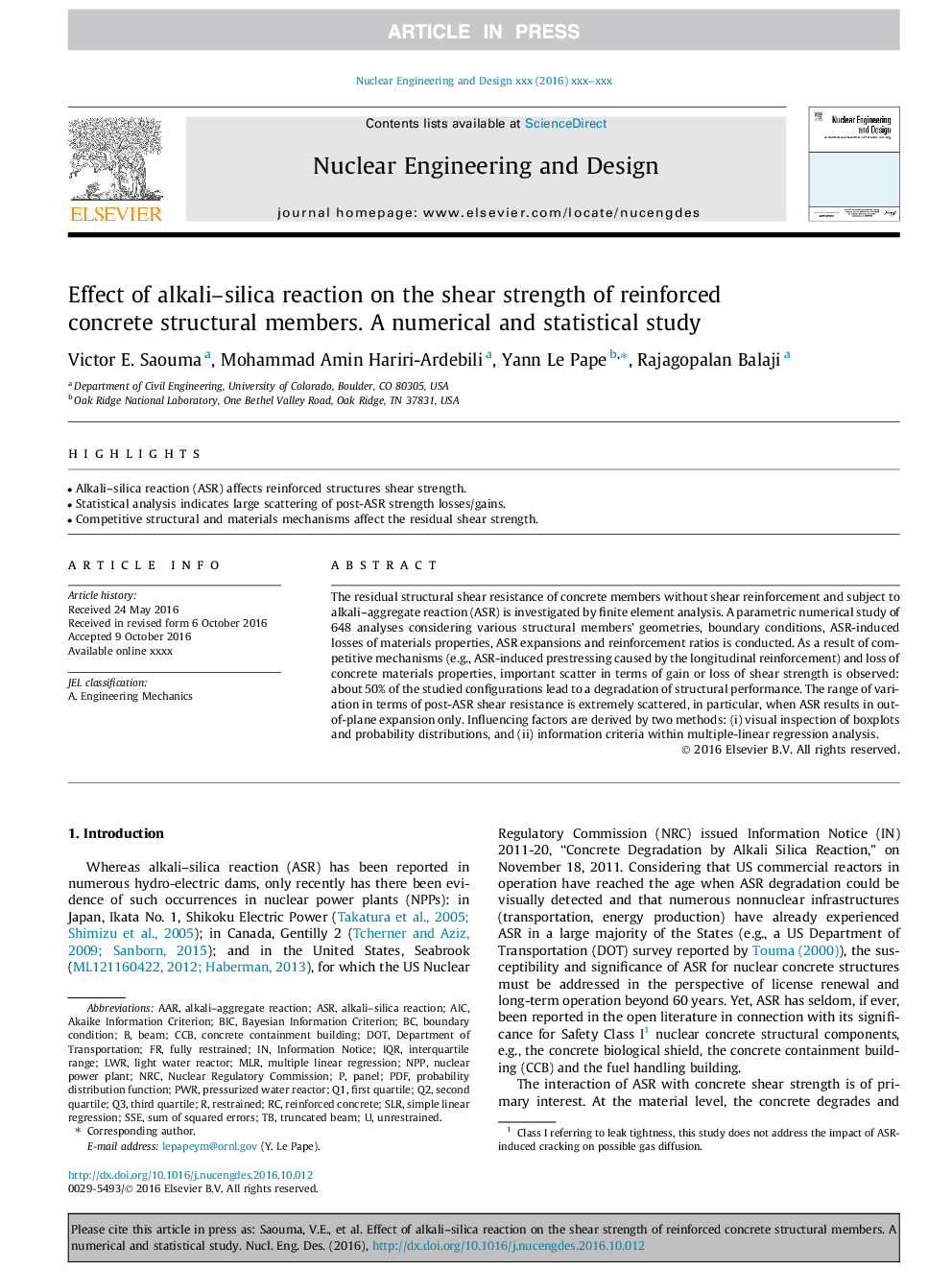| Article ID | Journal | Published Year | Pages | File Type |
|---|---|---|---|---|
| 4925617 | Nuclear Engineering and Design | 2016 | 16 Pages |
Abstract
The residual structural shear resistance of concrete members without shear reinforcement and subject to alkali-aggregate reaction (ASR) is investigated by finite element analysis. A parametric numerical study of 648 analyses considering various structural members' geometries, boundary conditions, ASR-induced losses of materials properties, ASR expansions and reinforcement ratios is conducted. As a result of competitive mechanisms (e.g., ASR-induced prestressing caused by the longitudinal reinforcement) and loss of concrete materials properties, important scatter in terms of gain or loss of shear strength is observed: about 50% of the studied configurations lead to a degradation of structural performance. The range of variation in terms of post-ASR shear resistance is extremely scattered, in particular, when ASR results in out-of-plane expansion only. Influencing factors are derived by two methods: (i) visual inspection of boxplots and probability distributions, and (ii) information criteria within multiple-linear regression analysis.
Keywords
ASRPWRIQRNPPLWRSSEAARAICSLRBICMLRNRCCCBA. Engineering mechanicsfirst quartileReinforced concreteUnrestrainedLight water reactorPressurized Water ReactorSimple linear regressionMultiple linear regressionthird quartileProbability distribution functionsum of squared errorsinterquartile rangeRestrainedBoundary conditionBayesian information criterionAkaike information criterionDOTnuclear power plantalkali–aggregate reactionAlkali–silica reactionDepartment of TransportationpanelBeamPdfNuclear Regulatory Commission
Related Topics
Physical Sciences and Engineering
Energy
Energy Engineering and Power Technology
Authors
Victor E. Saouma, Mohammad Amin Hariri-Ardebili, Yann Le Pape, Rajagopalan Balaji,
